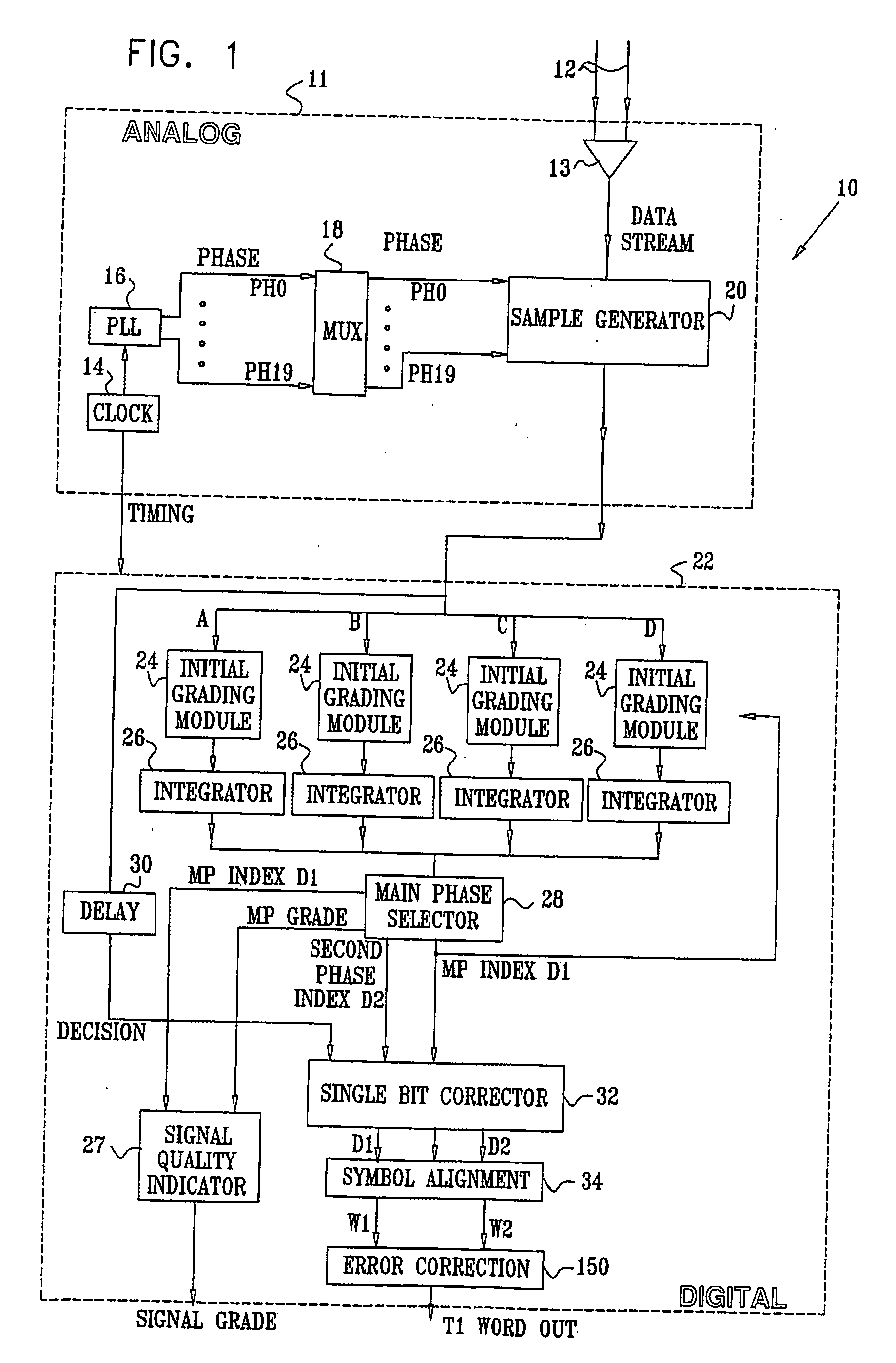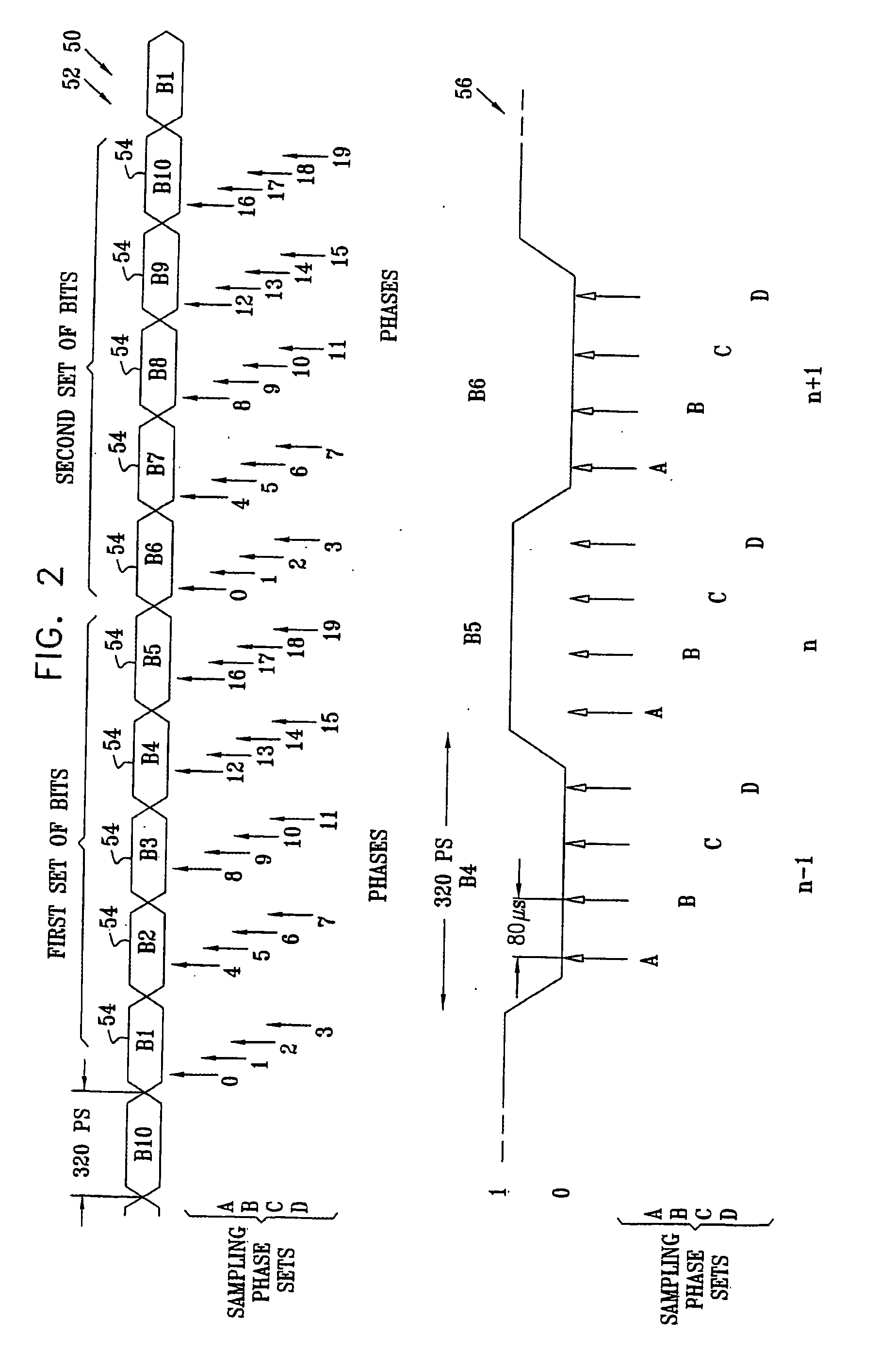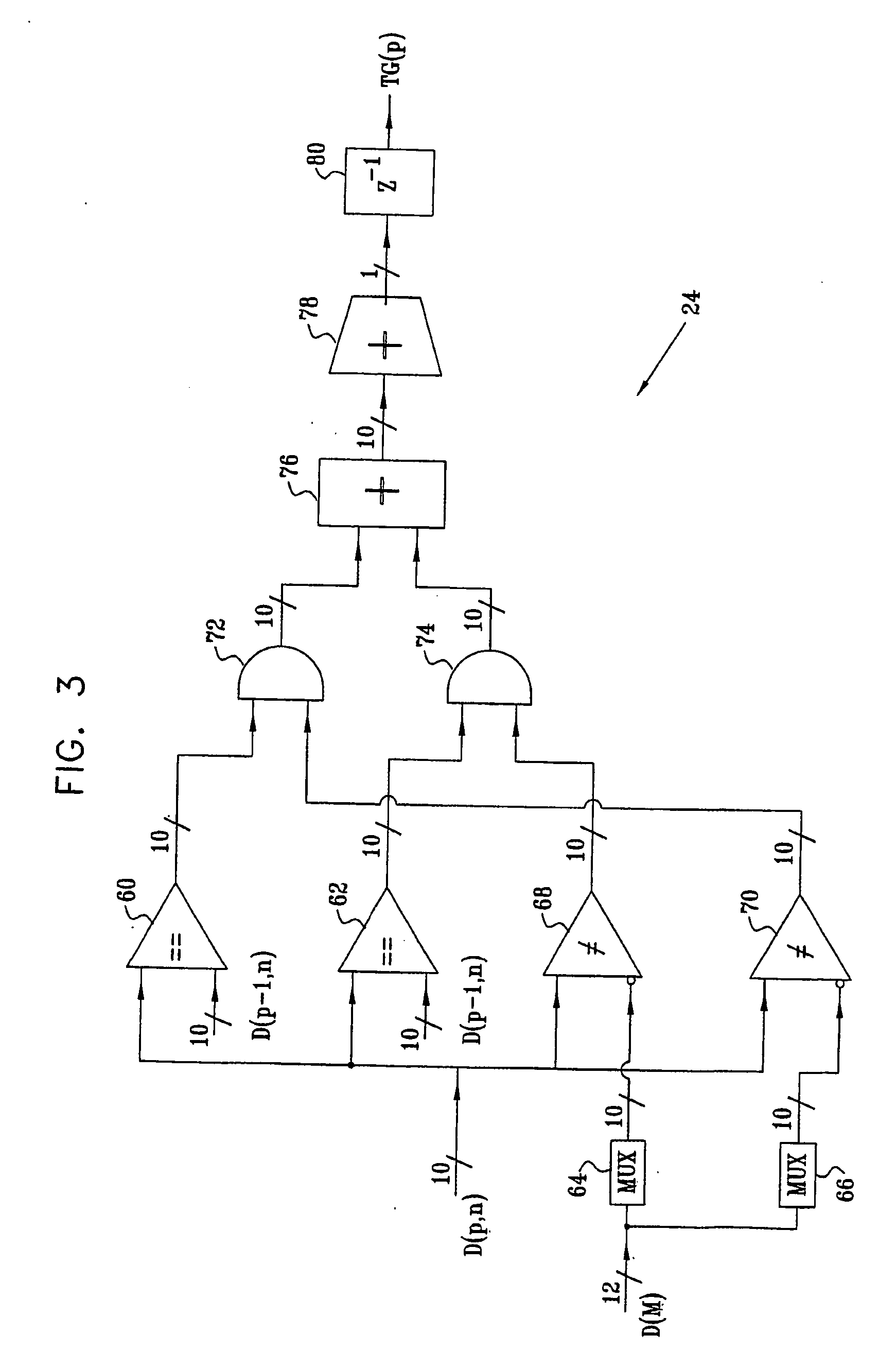Error correction of balanced codeword sequence
- Summary
- Abstract
- Description
- Claims
- Application Information
AI Technical Summary
Benefits of technology
Problems solved by technology
Method used
Image
Examples
Embodiment Construction
[0080] Reference is now made to FIG. 1, which is a schematic block diagram of a deserializer 10, and to FIG. 2, which comprises schematic graphs of data received by the deserializer, according to a preferred embodiment of the present invention. In an analog front end 11, deserializer 10 receives incoming serial data which may be transmitted according to substantially any serial data protocol. Hereinbelow, by way of example, the data is assumed to be transmitted in the form of 8b / 10b encoded data according to IEEE standard 802.3z, as described in the Background of the Invention. The data is received on a channel, herein assumed to comprise two differential lines 12, although it will be understood that the channel may not comprise differential lines.
[0081] The data is combined in an input cell 13 as a single data stream 50 of bits 54, as shown in a graph 52 (FIG. 2), and the single bit stream is fed to a sample generator 20. Bits 54 are also referred to herein as bits B1, B2, . . . ,...
PUM
 Login to View More
Login to View More Abstract
Description
Claims
Application Information
 Login to View More
Login to View More - R&D
- Intellectual Property
- Life Sciences
- Materials
- Tech Scout
- Unparalleled Data Quality
- Higher Quality Content
- 60% Fewer Hallucinations
Browse by: Latest US Patents, China's latest patents, Technical Efficacy Thesaurus, Application Domain, Technology Topic, Popular Technical Reports.
© 2025 PatSnap. All rights reserved.Legal|Privacy policy|Modern Slavery Act Transparency Statement|Sitemap|About US| Contact US: help@patsnap.com



